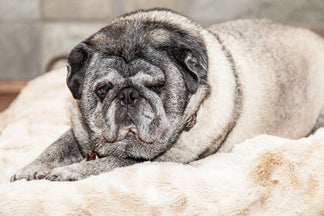I love the phrase that Cesar Millan often uses: “You don’t always get the dog you want but you always get the dog you need.” One often hears him using this phrase when working with a dog owner that had to change something fundamental within themselves in order to help rehabilitate their dog. It has always been a positive change in the owner that became the catalyst for helping their dog.
When our dogs have behavioral problems, sometimes our behavior has contributed to the imbalance in our dogs. For example, it could be that we’ve given too much affection at the wrong times or allowed our dogs too much freedom. Emotions are often at the root of the behavior that affects our dog’s balance.
Many find that once we identify that underlying emotional need and address it, we can begin to work with our dogs more neutrally and bring leadership into our relationship with our dogs. The change in the owner opens the path for change in the dog.Here are some areas where I’ve had to grow in order to help my dog, Kayo, become a truly happy dog.
Neutrality – I prefer being neutral about most things. I don’t like to take sides or get emotional, and I like to make up my own mind about things rather than be influenced by what others say. But I used to lose my neutrality on every level when it came to Kayo. When I lost that neutrality with her, I’d become emotional when she’d aggress. In that moment, she’d lose her trust and respect in me and it would be clear that I couldn’t guide her in that state. I had to learn to be neutral with her and that took deep reflection.
Patience – This is a quality that doesn’t come naturally to me. I like to move quickly and get quick results. Kayo is smart so she learns fast. When we started working on her behavior, I thought that transformation would be just as fast, but I was wrong. It was a process for me and her. I had to give her time to learn what I was asking of her, to build her confidence, and learn to make good decisions. I hear a lot of owners talking about wanting their dog’s behavior to change overnight, yet, like in my case, the owner’s self improvement takes longer.
Calm Confidence – Working with great trainers helped me build confidence when I had Kayo out in the real world. They often reminded me that my communication with Kayo would be most effective when it was both calm and confident. I had to practice calm confidence – in my posture and how I walked, how I held Kayo’s leash on walks, and how I spoke with her. I practiced never raising or deepening my voice, standing tall no matter what happened, and never losing my cool.
Jubilation – Kayo, like many dogs, responds well to jubilation and excitement as rewards. Though I tend to be on the happier side of the slider most of the time, I’m not big on jubilation and big excitement. I’m more of a smile calmly type of gal. But I watched how Kayo responded to our trainers when they used jubilation as praise, I knew that it was something I’d have to learn. Now I love expressing excitement when a dog accomplishes something, even simply coming when called.
Boldness – Starting my training with Kayo with low distractions, a.k.a. when nobody else was around, was wonderful and for a moment made me too comfortable. I’ve never been interested in bringing attention to myself in public, so it was challenging for me to move to higher distractions. Between Kayo lunging at someone and me having to give her a respectful correction and using high-pitched jubilant squeals for praise, it was hard for me to be out and bold enough to draw attention. This is one quality that I didn’t necessarily work on but it was forged through doing what was best for Kayo.
An insecure, aggressive dog isn’t what I wanted but she was what I needed. I’ve grown tremendously by working with Kayo and she’s now a confident dog that I can take anywhere. Training our dogs is equally, if not more so, about us and our growth. Regardless of what program or training method we use to work with our dogs, we have to be prepared to change ourselves fundamentally. I believe this is the prerequisite to training any dog.
About the Author: Mahogany Gamble is a lifetime dog lover who spends her days joyously caring for dogs. She owns The Balanced K9, a San Francisco Bay Area-based dog walking, boarding and training company; and she's the creator of the BoingyDog blog. Her aim is to share with dog owners everywhere the importance of exercise, engagement, leadership and training for raising happy and balanced dogs. This article was originally posted on January 2, 2014 on BoingyDog.


 Health and Fitness
Health and Fitness
 Health and Fitness
Health and Fitness
 Health and Fitness
Health and Fitness
